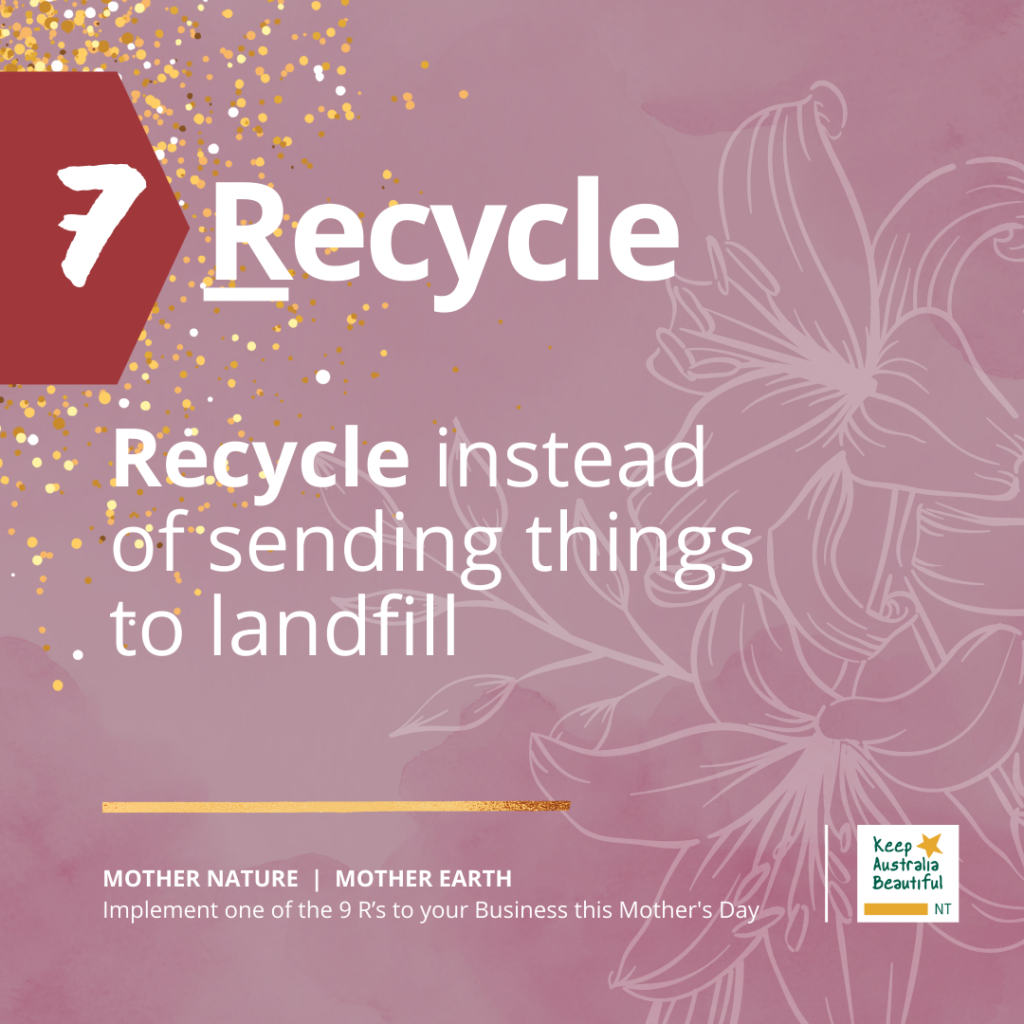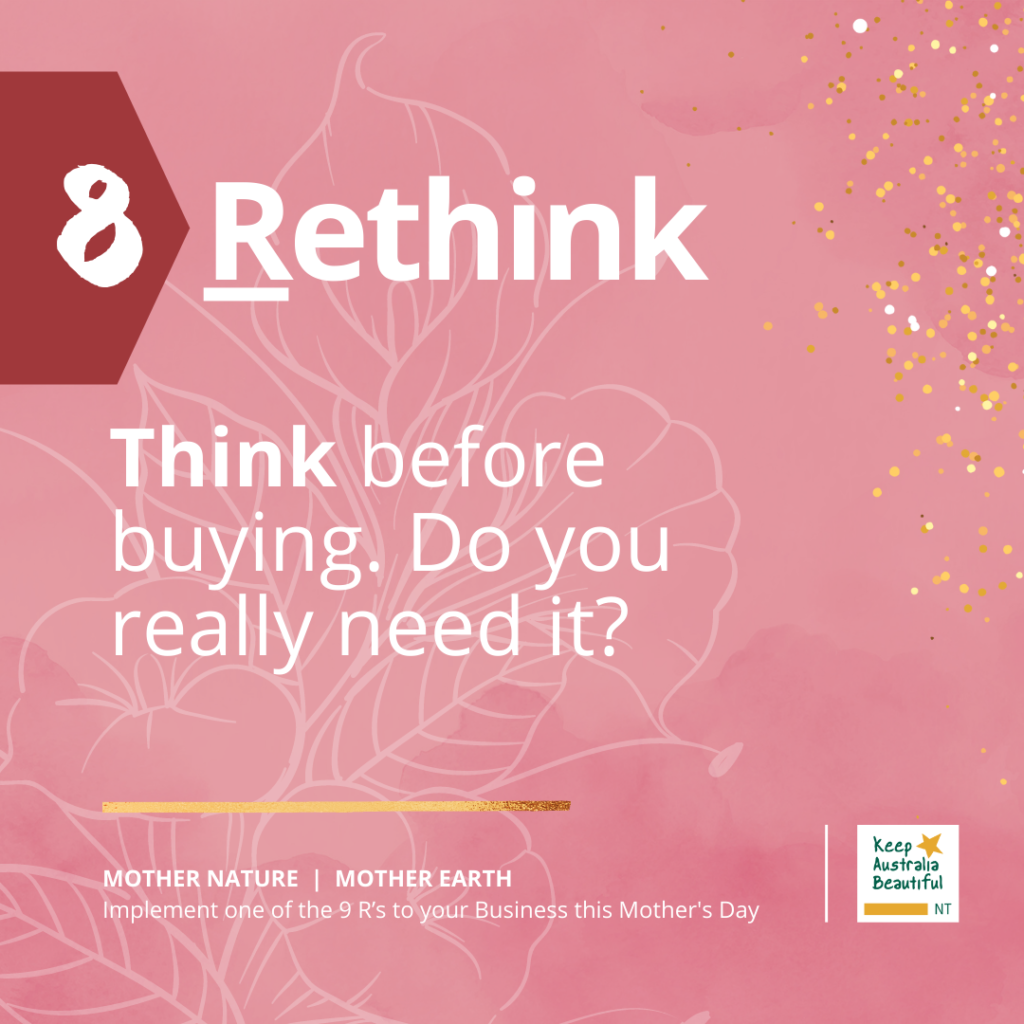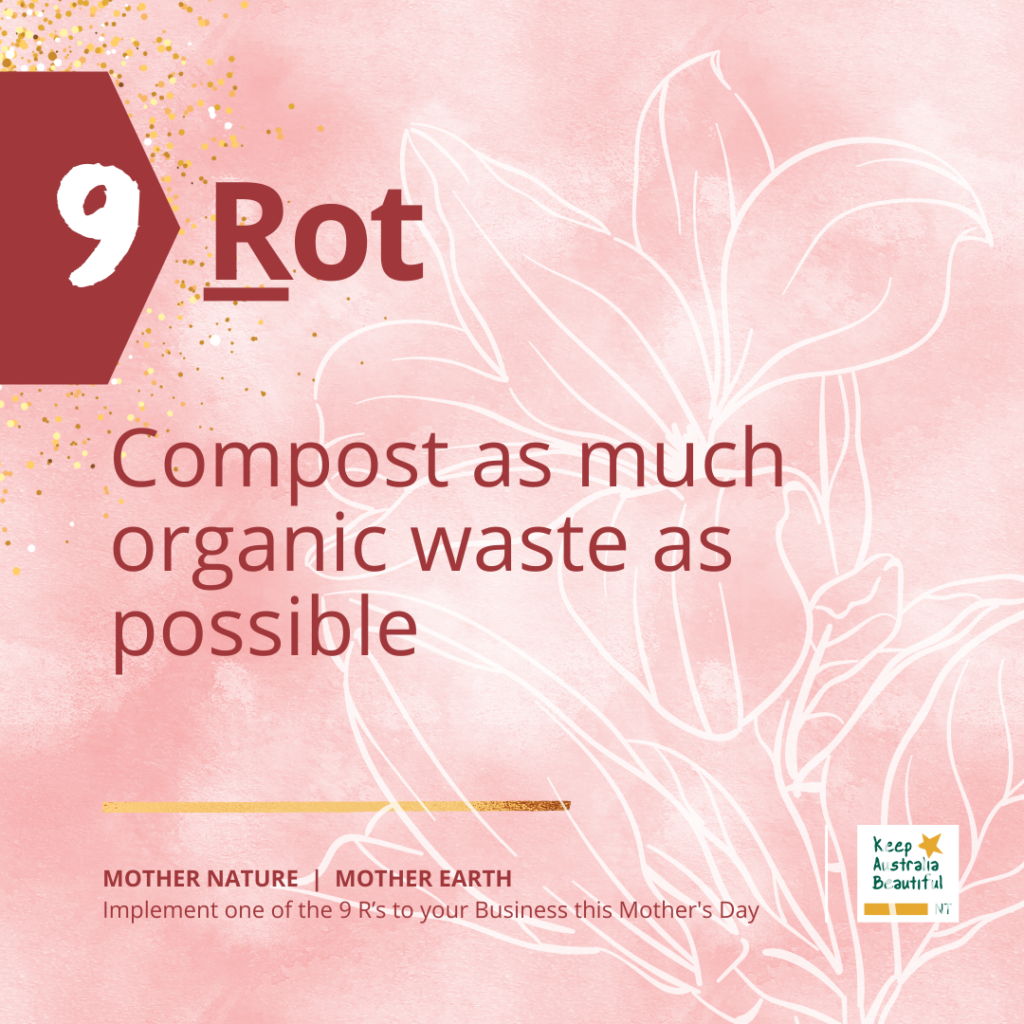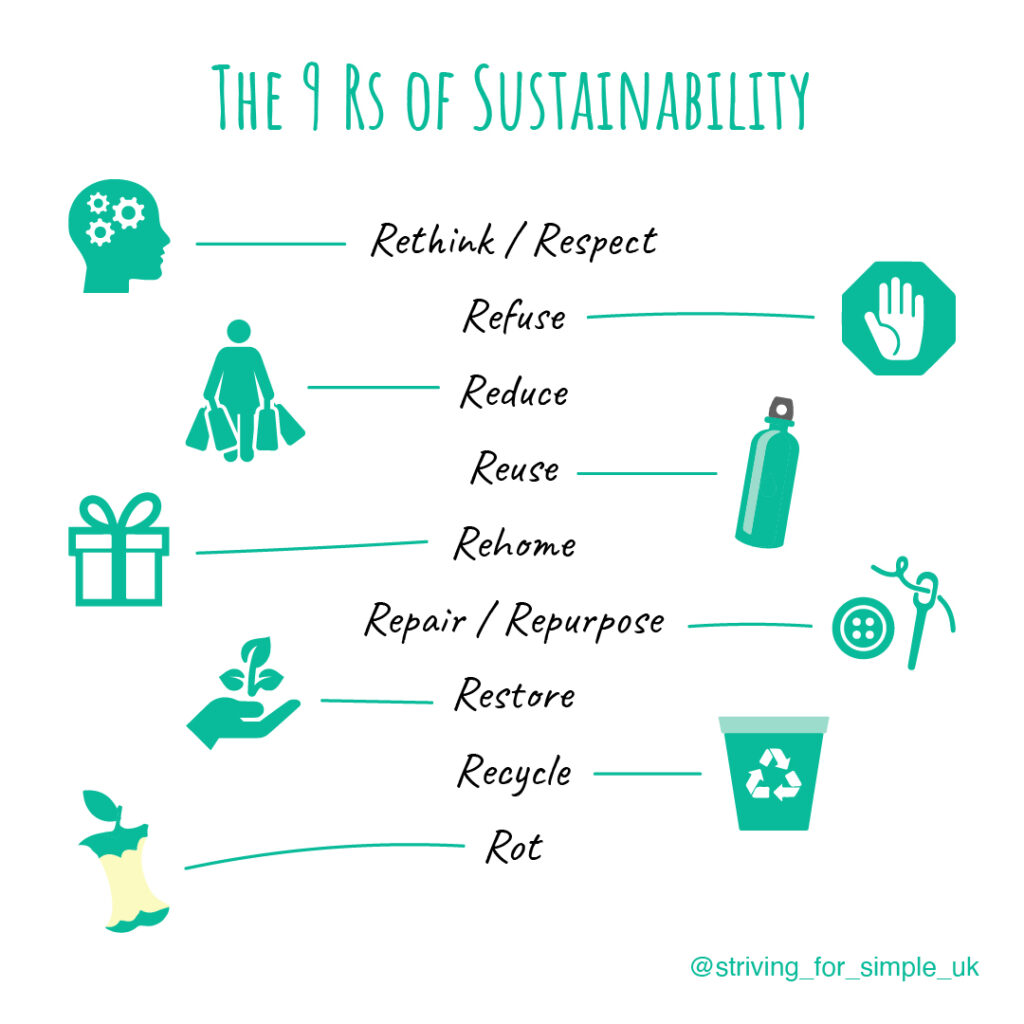MOTHER NATURE, MOTHER EARTH
If you want to reduce your impact on the planet this Mothers Day, this article is for you!
We’ve highlightighted the 9 R’s of Sustainability, and we’re asking you to participate! Whether you’re a business, school or an individual, implementing one or all of these 9 R’s can help you make sustainable choices for Mother Earth.
And in case you forgot – Mother’s Day is on the14th May 2023.
The 9 R’s of Sustainability
The 9 Rs of Sustainability model can help us to focus our efforts in the right (most effective) places.









1 Refuse
Everything we consume has an environmental cost and we are consuming at an unsustainable rate. By recognising what we actually need and cutting what we don’t need out of our lives, we can significantly reduce our impact on the planet.
From refusing plastic straws to boycotting fast fashion, there are many ways to try to change the status quo and lead by example.
2 Reduce
There will be things that you can’t cut out of your life completely. The next step is to consider what you can reduce. By consuming less, we demand less of the world’s finite resources and we produce less waste. Here are some examples of what you can do:
- Cut down your meat and dairy intake
- Drive less (you might need your car for work but perhaps you can walk, cycle or use public transport for other purposes)
- Give experiences as gifts instead of physical things
3 Reuse
Anything designed to be used once and then thrown away is pretty awful for the environment. While you might not be able to eliminate all single-use items from your life, there are many opportunities to reuse, for example:
- Take your own carrier bags, produce bags and containers to the shops
- Carry a reusable bottle/cup to refill with water or buy a hot drink when you’re on the go
- Use what you have first, e.g. reuse takeaway containers and glass jars to store leftovers, homemade preserves etc
4 Rehome
Everyone likes a good declutter from time to time. However, it’s important to consider what we do with our unwanted possessions.
Received a gift that you don’t want but can’t return? Regift it to someone who would use it. We can often feel guilty about regifting things but it’s better that it gets used than sit in a cupboard gathering dust.
One man’s trash is another man’s treasure! Even broken items may be of use to someone who has the skills to repair/repurpose it (see the next step).
5 Repair
Before you throw away a broken item, consider if it can be mended. Repairing is often cheaper than replacing. If you’re not sure how, have a look to see if there’s a how-to video online. Though if it needs to be done by a qualified professional, such as an electrician, don’t attempt it yourself.
Old items that are no longer fit for purpose can often be repurposed and given a new lease of life. From turning wooden pallets into outdoor seating or using an old boot as a plant pot, with just a little creativity we can prevent many items going into landfill.
6 Restore
Human activities have had such a devastating effect on wildlife. We need to restore vital carbon stores, such as rainforests, if we are to meet our carbon targets. Here are some ways you can help:
- Plant a tree – or many! (community groups around the UK are organising tree planting sessions – have a look for one near you)
- Create a mini wildflower meadow in your garden (bees love them!)
- Support organisations working to protect and restore nature, e.g. fund their work, sign their petitions and share their posts
7 Recycle
For years recycling was sold as the solution to our overconsumption. But if your bath is overflowing, you don’t reach for the mop to clean up the mess, you turn off the tap! We need to reduce our consumption first and foremost.
That said, recycling is still important, in order to get the most out of existing resources.
Educate yourself on what can and can’t be recycled. Some materials can be recycled infinitely (e.g. aluminium and glass), others can only be recycled a few times and only to be made into ‘lesser’ products (e.g. paper and some types of plastic). Some materials can’t be recycled at all (e.g. some plastics).
8 Rethink
- Question your beliefs about sustainable living
- Recognise the barriers you create for yourself that prevent you achieving your goals
- Consider whether you really need something before purchasing it
- Borrow / rent / buy second-hand instead of buying new, wherever possible
9 Rot & Compost
Compost as much of your organic waste as possible. If you have a garden or allotment, you can create a compost bin easily out of reclaimed wooden boards or pallets. If you don’t have any outdoor space, you could set up a wormery – they can be small enough to fit in a cupboard and don’t produce the bad smells that a compost bin does.
Any of these options will help you to limit how much of your food waste ends up in landfill, where it will produce methane (a more potent greenhouse gas than carbon dioxide). As a bonus, you will also get some free compost and/or liquid plant food. It’s a win-win!

For further information please contact
Keep Australia Beautiful Council NT, Chief Executive Officer, Heimo Schober
by phone 0407 186 461 or email to ceo@kabcnt.org.au